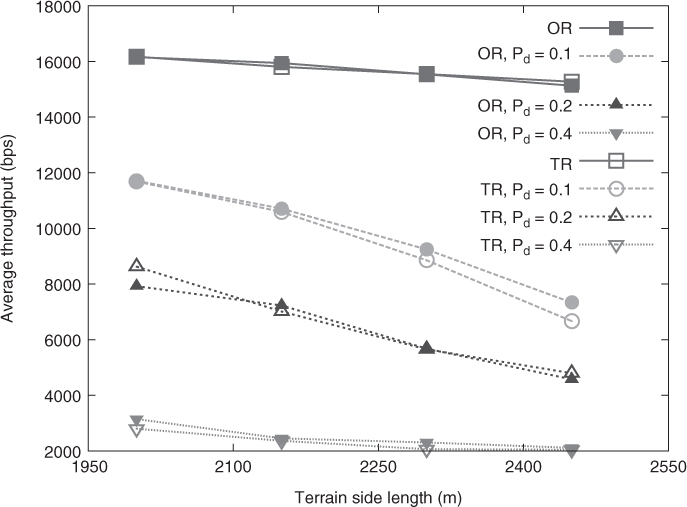9.3 Resilience to Packet-Dropping Attack
A packet-dropping attack is a common attack in multihop wireless networks, where malicious nodes simply drop all the packets routed through themselves. It is intuitive that, because of its multipath nature, opportunistic routing should be more resilient to the packet dropping attack than the traditional single path routing. We conduct a simulation to validate this intuition. The simulation settings are the same as the simulation in Section 9.1.2 except that the malicious attackers do lie on the link quality but drop packets. For each run, a certain proportion (Pm) of nodes in the network are set as malicious nodes, which drop all the packets routing through them. We assume the source and destination nodes are not malicious. The simulation result is shown in Figure 9.4. Each point on the figure is the average value of five random runs. It shows that generally opportunistic routing is more resilient than traditional single-path routing when faced with a packet-dropping attack. The throughput deceases when more nodes in the network are malicious.
Figure 9.4 Average end-to-end throughput of opportunistic routing and traditional routing under packet dropping attack.

However, in some case, for example, when terrain side length is 2000 m and Pm = 0.2, single-path routing can deliver more packets. The reason behind it can be as follows. When the ...
Get Multihop Wireless Networks: Opportunistic Routing now with the O’Reilly learning platform.
O’Reilly members experience books, live events, courses curated by job role, and more from O’Reilly and nearly 200 top publishers.

